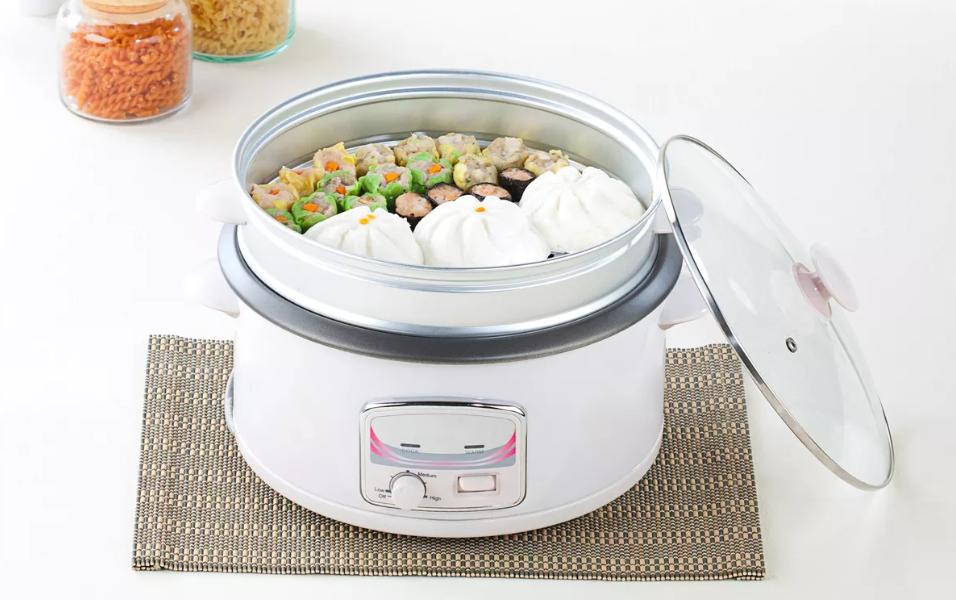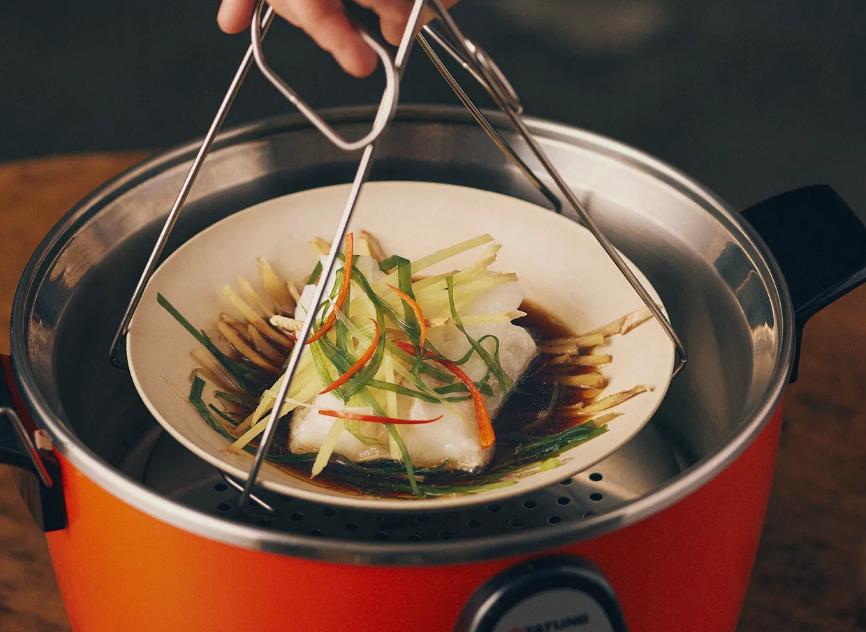Learning how to use a rice cooker as a steamer can simplify meal preparation and maximize the versatility of this kitchen appliance. A rice cooker isn’t just for cooking rice; it can easily transform into a multipurpose kitchen device, allowing you to prepare a variety of steamed dishes efficiently. Whether you’re looking to save time, enhance the nutritional value of your meals, or simply try out a new cooking technique, this guide provides everything you need to get started.

Why Use a Rice Cooker as a Steamer?
Using a rice cooker as a steamer offers several benefits. First, it’s a fantastic time-saver. Instead of juggling multiple pots and pans, you can cook rice and steam vegetables or proteins simultaneously. This dual functionality can streamline meal prep, making it easier and quicker to get dinner on the table.
Second, steaming is one of the healthiest cooking methods available. It helps retain essential nutrients in vegetables and proteins that might be lost through boiling or frying. Steaming in a rice cooker helps preserve the food’s natural flavors, textures, and nutritional integrity, which is great news for health-conscious individuals.
Lastly, rice cookers are user-friendly and often include a built-in steaming function, making them accessible even to beginners.
What Foods Can You Steam in a Rice Cooker?
Rice cookers are surprisingly versatile when it comes to steaming a variety of foods. Vegetables like broccoli, carrots, cauliflower, and asparagus steam beautifully, retaining their vibrant colors and nutrients. Leafy greens such as spinach, kale, and Swiss chard become tender without turning mushy.
Proteins like chicken, fish, and tofu also benefit from steaming in a rice cooker, staying moist and flavorful. Dumplings and small portions of pasta can be prepared by steaming as well. Additionally, you can steam desserts like puddings or soft cakes. The rice cooker’s enclosed environment ensures even cooking, preventing these sweet treats from drying out. The range of foods you can steam in a rice cooker makes it a valuable kitchen tool.
How to Set Up Your Rice Cooker for Steaming
Preparing the Rice Cooker
Before you begin steaming, it’s essential to prepare your rice cooker for optimal performance. First, ensure the rice cooker is clean and dry. If it has a removable inner pot, take it out and wash it with warm, soapy water. Rinse the pot thoroughly, making sure there’s no soap residue, and dry it completely before reassembling the cooker.
Adding Water to the Cooker
The next step is to add water to the rice cooker. The amount of water you need will depend on the steaming duration and the type of food you’re cooking. As a general rule, fill the rice cooker’s inner pot with about one to two cups of water. This creates the steam required for cooking. Be cautious not to overfill, as too much water can overflow or affect the steaming process.
Using a Steaming Basket
A steaming basket is essential for this process. Most rice cookers come with one, but if yours doesn’t, you can purchase one that fits snugly inside. Place the steaming basket over the water level inside the cooker. This ensures that the food is elevated above the water, allowing the steam to circulate and cook the food evenly.
Step-by-Step Guide to Steaming with a Rice Cooker
Preparing Your Food
Start by washing and chopping your vegetables or portioning your proteins. Make sure all pieces are of uniform size to promote even cooking, which helps prevent some items from being overcooked while others remain undercooked. For tougher vegetables, such as carrots or broccoli, consider blanching them briefly before steaming to soften them and reduce overall cooking time, ensuring a more consistent texture.
Arranging Food in the Steaming Basket
Place your prepared food in the steaming basket in a single layer to ensure even cooking. Avoid overcrowding, as this can block steam from circulating properly, resulting in unevenly cooked food. Arrange each item with enough space around it, allowing steam to flow freely and cook everything uniformly. This method helps achieve the best texture and flavor for your dishes.
Steaming Process
With your food in the basket and water in the cooker, it’s time to start steaming. Close the lid of the rice cooker and select the “Steam” function, if available. If your model doesn’t have a specific steam setting, you can manually set the cooking time. For most vegetables and proteins, steaming takes between 10 to 20 minutes.
Checking for Doneness
Halfway through the estimated cooking time, it’s a good practice to check on your food to ensure it’s cooking properly. Carefully open the lid, being cautious of the steam, and use a fork or knife to test the texture of vegetables or the internal temperature of proteins. If needed, close the lid and continue steaming until the desired doneness is achieved. This step helps ensure your meal is cooked to perfection.

Tips and Tricks for Successful Steaming
Adjusting Cooking Time for Different Foods
Each type of food has a different cooking time depending on its texture and density. For instance, delicate leafy greens like spinach may only need a few minutes to cook, while root vegetables like potatoes, which are denser, can take significantly longer. It’s important to experiment and adjust the cooking time based on your personal preferences, texture, and experience.
How to Avoid Overcrowding the Steaming Basket
Each type of food has a different cooking time depending on its texture and density. For instance, delicate leafy greens like spinach may only need a few minutes to cook, while root vegetables like potatoes, which are denser, can take significantly longer. It’s important to experiment and adjust the cooking time based on your personal preferences, texture, and experience.
Conclusion
Using a rice cooker as a steamer is a practical and healthy cooking technique that can save you time and effort. If you're wondering how to use rice cooker as a steamer, it's a convenient and versatile method that enhances the nutritional value of your meals, as steaming helps retain vitamins and minerals. By following this guide, beginners can efficiently prepare a variety of steamed dishes, such as vegetables, fish, or dumplings, using just one appliance. This makes meal prep simpler, more enjoyable, and ensures you can create delicious, healthy meals with ease.
FAQs
Can I steam different types of food simultaneously in my rice cooker?
Yes, you can steam various foods at once. However, consider each food’s cooking time and adjust accordingly. For best results, place longer-cooking items at the bottom and quicker-cooking ones on top.
How do I clean and maintain my rice cooker after steaming?
Let your rice cooker cool completely before cleaning. Remove and wash the inner pot and steaming basket with warm, soapy water. Wipe the exterior with a damp cloth. Regular cleaning ensures optimal performance and longevity.
Are there any foods I should avoid steaming in a rice cooker?
Avoid steaming foods that expand significantly, like pasta, unless you’re familiar with how they’ll behave. Additionally, items that need intense, direct heat to cook properly, like thick cuts of meat, may not be suitable for rice cooker steaming.
